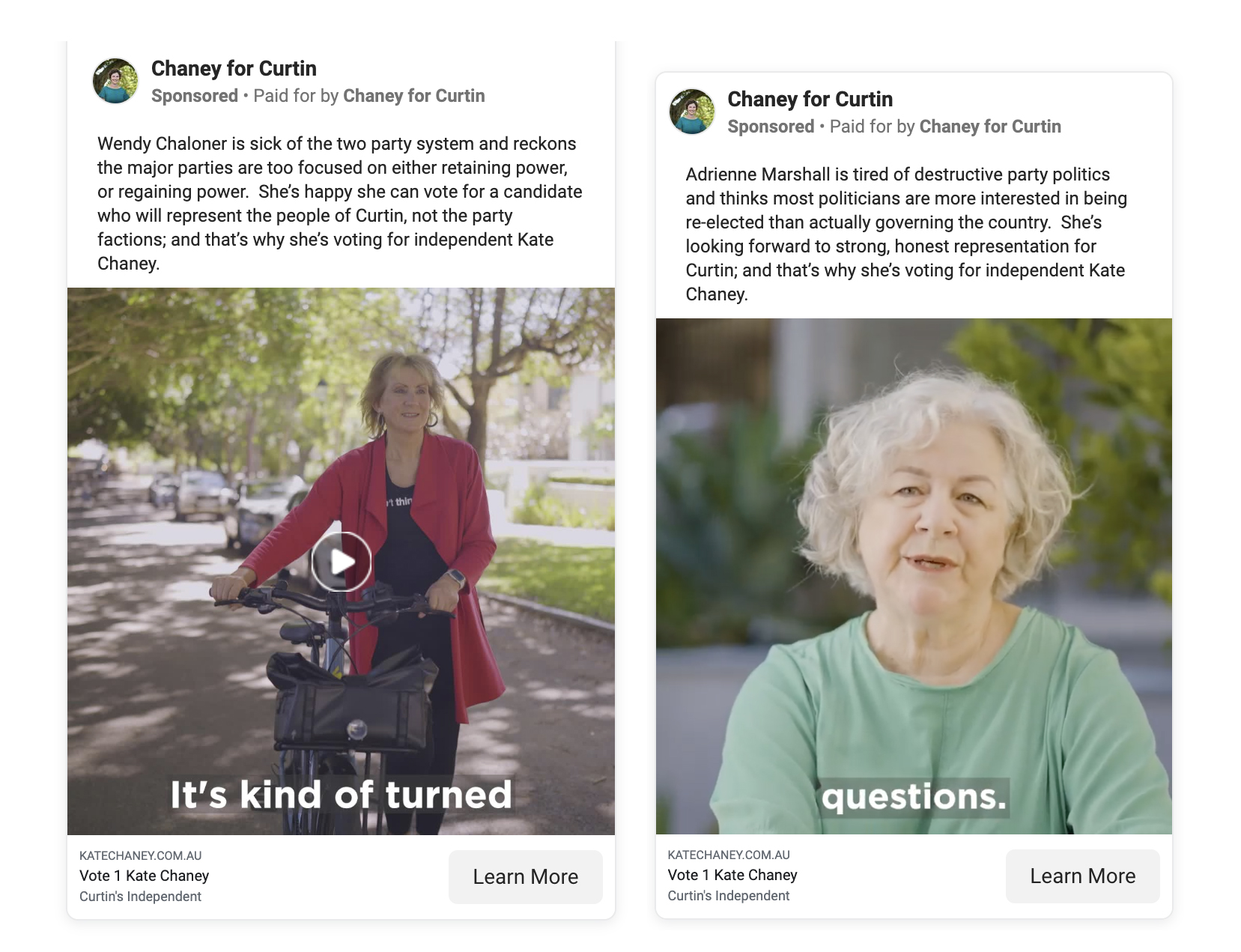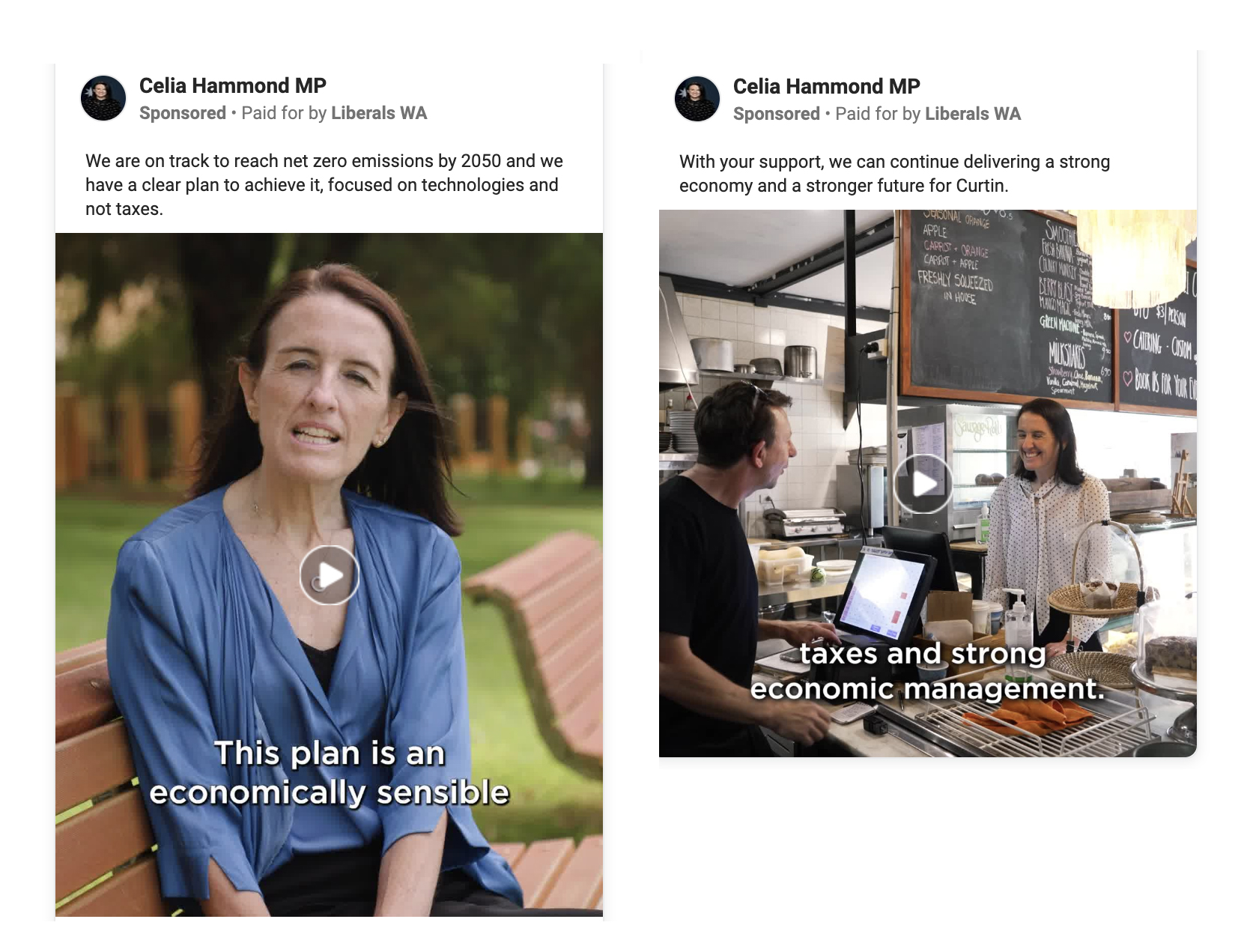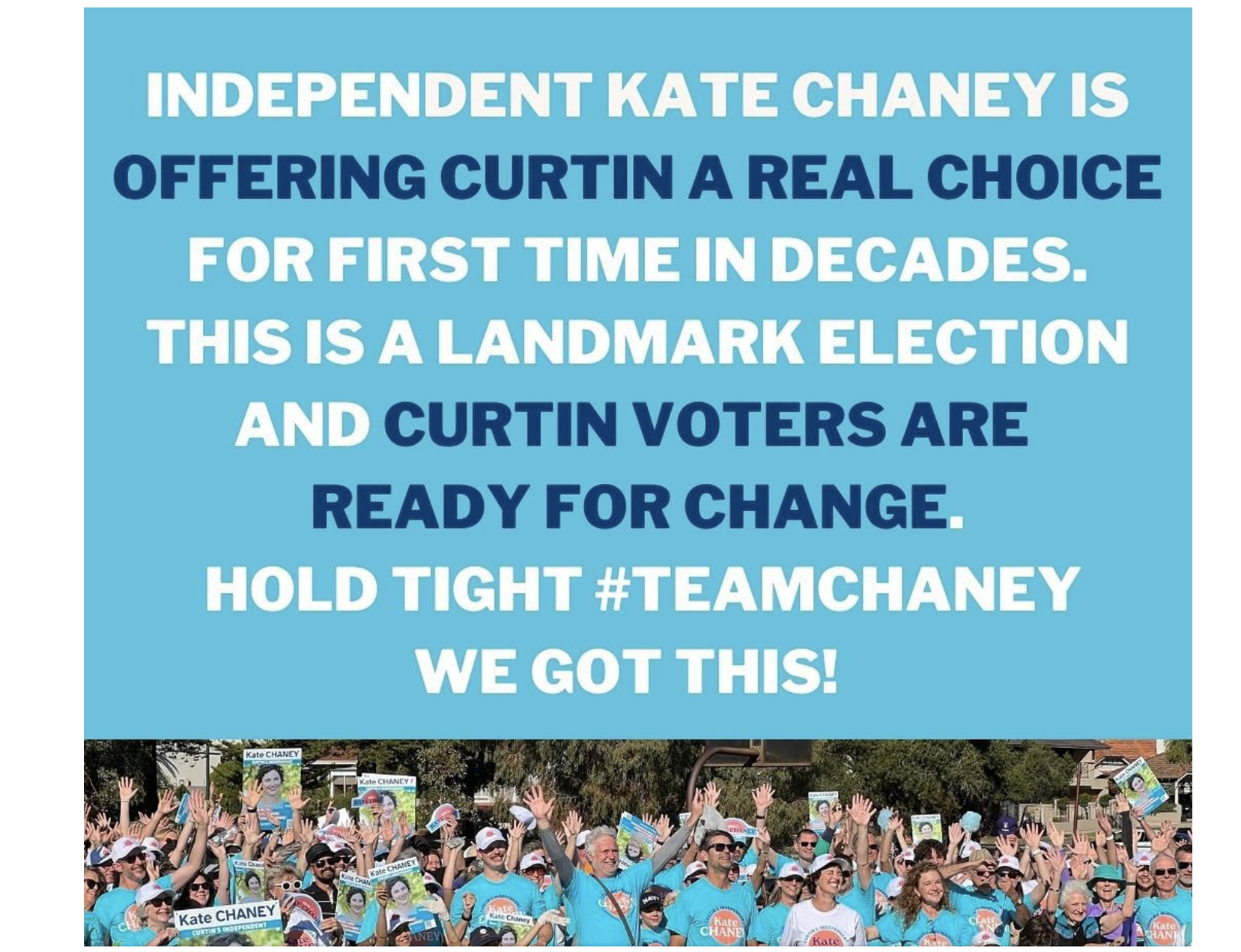
Name recognition: How an independent ejected the LNP from one of WA's most blue ribbon seats
Independent Kate Chaney’s resounding defeat of Liberal MP Celia Hammond in the seat of Curtin in the recent federal election was achieved with a well-executed social media campaign and a family name that resonated through the business and political communities of Western Australia.
FactLab analysis has established that the Chaney family name was a significant factor in attracting disaffected Liberal voters who also identified with Ms Chaney’s community-based campaign that called for a policy reset of the Coalition’s climate change policies.
The endorsement from her uncle, Fred Chaney, a former deputy Liberal Party leader and widely-respected minister for Indigenous Affairs in the Fraser government, both in print and on radio, was a significant factor in her success.
Ms Chaney is the daughter of Michael Chaney, a prominent WA businessman, chairman of the National Bank and chancellor of the University of Western Australia.
Perth’s inner metropolitan electorate is home to 151,384 people traditionally aligned to the Coalition. Named after the war-time prime minister John Curtin, the electorate has a gender divide of 49 per cent male and 51 per cent women. Constituents aged between 25 and 34 make up 15 per cent of the electorate.
Apart from a brief interlude when Allan Rocher MP resigned from the Liberal Party and was elected in 1996 as an independent, Curtin had been a Liberal Party fixture since 1949.

Ms Chaney’s high level of Facebook engagement was backed up on the ground with 780 volunteers who door knocked the electorate. Her campaign attracted $1 million in public donations and funding from the Climate 200 lobby group with which she ran a targeted advertising campaign on Facebook with a focus on 25 to 34 year olds.
By contrast, Ms Hammond relied on a static Liberal Party message urging for a “reelected Morrison government”. Data shows her social media posts failed to resonate positively.

The stark difference between the online campaigns of Kate Chaney and Celia Hammond on Facebook
FactLab analysed the candidates’ social media campaigns on Facebook between April 10 and May 21.
Similar to her Liberal colleagues like Josh Frydenberg in Kooyong and Tim Wilson in Goldstein, Ms Hammond’s posts mostly promoted Liberal set piece policies.

Ms Chaney, by contrast, consistently posted community-based messaging, in line with other teal independents nationally.

Ms Chaney also campaigned for an inclusive Curtin community, wishing to “create opportunities for a paradigm shift to incorporate the role of Aboriginal and Torres Strait Islander people in our culture and system”.
Ms Chaney supports “a referendum and legislation to enact [First Nations voices] and supports authentic pathways towards reconciliation”.
The divergent Facebook strategies and messaging can be illustrated in the opinion pieces Ms Chaney and Ms Hammond wrote in the West Australian newspaper, which they posted on Facebook.
Ms Chaney’s opinion piece titled “Old values missing in action” received 204 likes, 32 comments and 53 shares.
Ms Hammond’s opinion piece, titled “Beware of voting for change”, received 126 likes, 22 comments and 15 shares.
Ms Chaney’s Facebook page had over 2,000 followers, 300 fewer than Ms Hammond’s. However, Ms Chaney had greater follower engagement on the platform.
Ms Chaney had 2,200 Facebook interactions compared to Ms Hammond’s 468. These drove 19,300 video views for Ms Chaney while Ms Hammond recorded 3,200 video views.
Twitter was an uncontested platform for Ms Chaney as Ms Hammond did not have an account.
What the candidates spent on advertising
The significant disparity between the candidates was shown in Facebook advertising.
According to QUT's PoliDashboard Facebook Political Ads Module, from April 10 to May 21, Ms Chaney spent between $30,800 and $40,380 on Facebook campaign advertising, and received more than one million impressions.
Ms Hammond spent between $2,500 and $3,395 on Facebook advertising during the same period and recorded only 110,000 impressions.
Neither Ms Chaney nor Ms Hammond’s name appears on the Google Transparency Report on Political Advertising in Australia,
However, Ms Chaney was supported by Climate 200, which is listed as having spent $33,000 during the campaign.
Ms Hammond was supported by the Liberal Party (WA division) which is listed as having spent $165,300 throughout the campaign.
Ms Chaney is recorded as spending $93,224 on Facebook Ads, with ad impressions as high as 300,000.
Ms Hammond is listed as spending $23,996 on Facebook Ads, less than a third of Ms Chaney’s spend. Ms Hammond received ad impressions as high as 150,000, half of Ms Chaney’s impressions.
Both Ms Chaney and Ms Hammond targeted their Facebook ads to those aged between 25 and 34 which was aligned with the dominant age bracket of Curtin.
Ms Chaney stated on her website that she “voluntarily implemented a transparent ‘real time disclosure’ approach to donations”.
This page shows Climate 200 donated $450,000 in total to Ms Chaney’s campaign between February 14 and May 9. Various community donations came to a total of $455,753 between December 21, 2021 and May 21, 2022.
Ms Chaney herself contributed $12,500 to the campaign at the start of the year and her family, notably Fred Chaney and Michael Chaney, contributed a total of $39,475 to the campaign between January 30 and May 6.
Kate Chaney’s connections with the Liberal heartland resonated
Ms Chaney was the director of innovation and strategy at Anglicare WA, a not-for-profit organisation and has lived in the electorate for most of her life.
Her grandfather, Frederick Chaney, was a long-serving minister in the post-war Menzies government, and later served as Lord Mayor of Perth.
Her uncle, Fred Chaney, Frederick Chaney’s son, had a national profile even though he had retired from active party politics. When his articles of endorsement were published in the Sydney Morning Herald and The Saturday Paper, they cast a spotlight on his niece’s campaign.
He wrote in the Sydney Morning Herald on May 4 that the party he once served “has lost its way” and he “will vote for Climate 200-supported independent Kate Chaney, who is also my niece”.
This piece resulted in a follow up interview on ABC radio.
He wrote in the Saturday Paper on May 18 that “parties have become dissociated from the communities they are there to serve” and described independents, like his niece, as an “external shock” to the current state of politics that needs reform.
Fred Chaney was a founding co-chair of Reconciliation Australia and introduced the Aboriginal Legal Service of Western Australia. He served as the federal minister for Aboriginal Affairs from 1978 to 1980.
Ms Chaney once worked as Wesfarmers’ Aboriginal Affairs manager, where she implemented reconciliation action plans. Her father, Michael Chaney is the current chair of Wesfarmers.
Additionally, FactLab tracked the online searches for Ms Chaney and Ms Hammond from April 10 to May 21 through Google trends.
Despite being a new independent challenging a sitting MP, searches for Kate Chaney outperformed searches for Celia Hammond throughout the election campaign with the highest points being the eve of the election and election day.
Prior to May 20 and May 21, the highest performing day for Ms Chaney was May 4, the day Fred Chaney wrote his opinion piece for the Sydney Morning Herald and the day of the ABC radio follow up interview.
The top breakout search related to Ms Chaney was searches for ‘Kate Chaney father’. Ms Hammond did not appear to have any related searches to her name.


Acknowledgement of Country
RMIT University acknowledges the people of the Woi wurrung and Boon wurrung language groups of the eastern Kulin Nation on whose unceded lands we conduct the business of the University. RMIT University respectfully acknowledges their Ancestors and Elders, past and present. RMIT also acknowledges the Traditional Custodians and their Ancestors of the lands and waters across Australia where we conduct our business - Artwork 'Sentient' by Hollie Johnson, Gunaikurnai and Monero Ngarigo.
More information